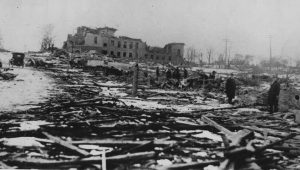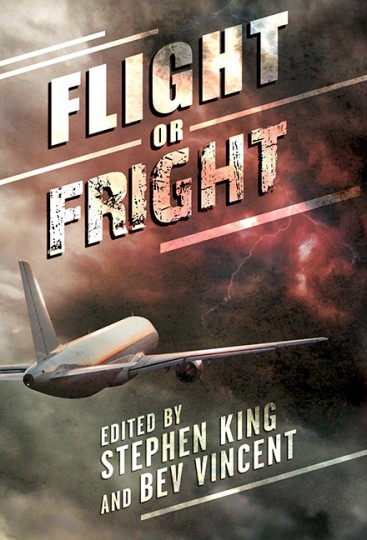 I was interviewed by Lilja and Lou for their Stephen King Podcast (#87) about Flight or Fright, the anthology I co-edited with Stephen King. We talked for over half an hour about how the book came about, how we selected the stories, etc. Check it out!
I was interviewed by Lilja and Lou for their Stephen King Podcast (#87) about Flight or Fright, the anthology I co-edited with Stephen King. We talked for over half an hour about how the book came about, how we selected the stories, etc. Check it out!
Last weekend we watched Molly’s Game, starring Jessica Chastain and Idris Elba. It’s the true story of a woman who started running high-stakes poker games that involved high-profile people (although not named in the movie, some of the characters are stand-ins for Toby McGuire, Leonardo DiCaprio and Ben Affleck), who ultimately ran into trouble and was arrested by the FBI for money laundering and other crimes. Elba plays her at-first reluctant attorney and Kevin Costner is her estranged father. It’s a bit talky, but you don’t have to understand Texas Hold-Em to enjoy the movie, and it is quite a journey.
The weekend before that we spent in Surfside, down the coast from Galveston, at a rental house we like to hire once or twice a year. There’s only a dune between the deck and the beach, looking out on the Gulf of Mexico and the oil rigs and cargo ships and other traffic on the water, plus the surfers—the surf was high one day in particular. It was moderately cool but warm enough to sit on the deck, and we took quite a few long walks on the beach and enjoyed watching the families playing on the beach. Very relaxing!
Author Linwood Barclay and I had a DM conversation on Twitter earlier this week in which we diagrammed the finale of The Americans. We agree there will be no happy endings for most (maybe all) of the characters, but we came up with a finale scenario that we thought would be perfect. It’ll be interesting to see how close we come.
I lived in Halifax, Nova Scotia for most of the 1980s while I was a student at Dalhousie University, first getting a B.Sc. in 1983 and then my Ph.D. in 1988. During those years, and subsequently, I’d heard about the Halifax Explosion, and could probably have told you a few things about it, many of them, as it turns out, wrong.
The Explosion happened in December 1917, during World War I, and it devastated the north end of the city. The worst hit section was called Richmond, but by the time I went to Halifax that “neighborhood” name was never mentioned. My impression was that a munitions bought struck a grain ship and the explosion happen immediately. Nope. The munitions ship, Mont-Blanc, was a French vessel carrying unthinkable amounts of TNT, picric acid and other flammables and explosives overseas to support the war effort. Six million pounds of explosives. The aging vessel was heavily burdened, and the crew was forbidden from carrying matches, let alone smoke. The ship had been sent up from New York to Halifax to see if it could find a slow convoy across the Atlantic.
The other ship, Imo, was empty, on its way from Europe down the US coast to stock up with relief supplies to take back across the Atlantic. After a stupid game of chicken in the narrows part of Halifax Harbour, Imo broadsided Mont-Blanc and a fire started on deck. The crew knew their cargo (although few other people in the region did) and immediately skidaddled. My impression is almost cartoonish when I imagine them leaping into lifeboats, paddling pell-mell for shore so fast they beached their boats and then continuing to run for the hills.
Mont-Blanc drifted toward the waterfront on the Halifax side and burned for ten or fifteen minutes before it finally blew up in what was the biggest man-made explosion in history, and it remained the biggest until decades later when the atomic bomb was dropped on Hiroshima. About 2000 people died immediately, 9000 were injured (in a city of 60,000). Parts of Mont-Blanc—heavy parts like anchors—were found miles away in the aftermath. A big part of the city was leveled. People—including many children—who were attracted by the spectacle of the ship burning in the harbour, went to their living room windows to watch and were blinded by flying glass.
It was a horrific disaster, but one from which Halifax recovered, with the help of neighboring cities and provinces and, notably, the people of Boston, who sent medical supplies and personnel and, later, rebuilding supplies, much of it en route before they’d even received a request for assistance (the telegram lines were down). The relationship between Halifax and Boston is cemented today with Halifax sending an enormous Christmas tree to be raised in the Boston Commons.
I wish I’d taken the opportunity to visit many of the sites in Halifax that contain remnants and memorials of that incident when I lived there. I knew more about the relationship between Halifax and the Titanic disaster. I think a return trip to Halifax is in the calling one of these days. In the meantime, I read an excellent account of the incident and its aftermath: The Great Halifax Explosion: A World War I Story of Treachery, Tragedy, and Extraordinary Heroism by John U. Bacon.
I bought the book to do research for a short story I’m contemplating, but my wife took an interest in the story, too, and I ended up reading the whole thing aloud to her over the course of a couple of weeks, including while we were on vacation. Now we’re reading Factfulness: Ten Reasons We’re Wrong About the World-and Why Things Are Better Than You Think by Hans Rosling, Anna Rosling Rönnlund, Ola Rosling. The introduction alone is fascinating in that it poses a set of thirteen questions about the world: how well people are educated, have access to medical treatments, etc. And most people get only two out of thirteen right, on average, because we have a negative and uninformed picture of the overall state of things. Most kids on the planet have access to vaccines, for example, and the majority of the world is not in poverty, as one might think.

